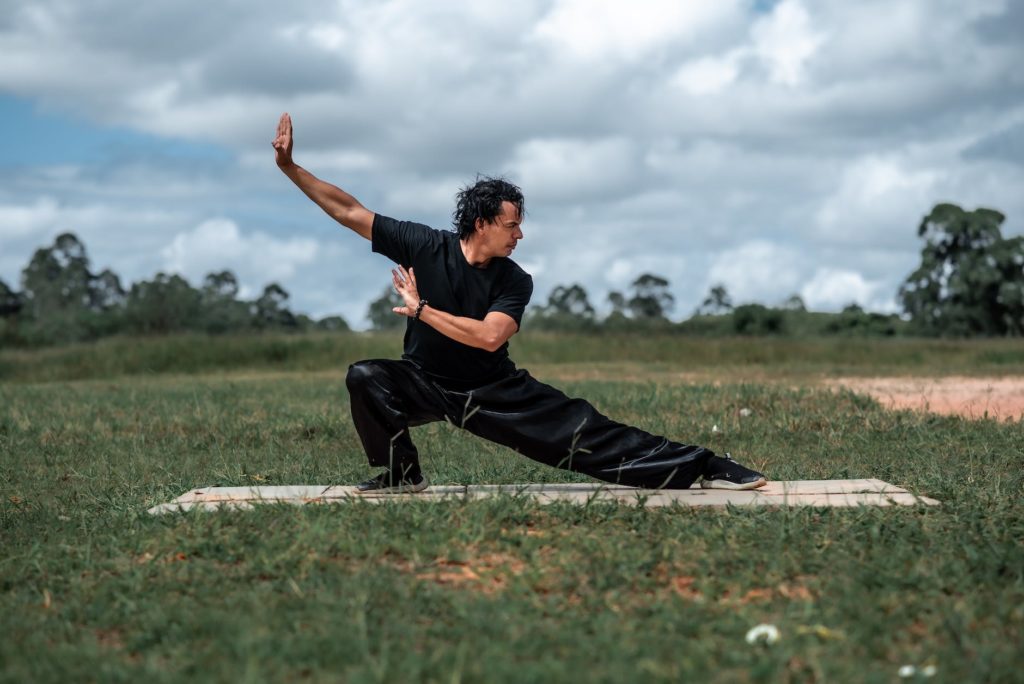Origin
From the Land of the Sleeping Giant, China. One of the legendary and respected founders who created the idea of imitating the flow and motion of different martial art techniques is Chang San Feng. He is said to live from the year 1391 until 1459. Back then, he was living in a monastery named Wu-Tang as a monk. By combining the different principles of Taoism, kung fu, and the theory of Yi Jing, he created the ever-popular form of meditation, Tai Chi.
Some researchers indicated that traces of a wide acceptance of Tai Chi were found in the village of Chen. This was the time of Chen Wang Ting during the early 1600s. Documents have it that this is the place where Tai Chi was born.
Characteristic
Tai Chi, in a word, literary means One. In another sense, it means “Supreme Ultimate Fist”. So, with the words combined, Tai Chi is done as one, with or without a partner, with the use of hand gestures and different slow motions. Tai Chi stresses to its practitioners that they must observe proper breathing, and correct posture so as to facilitate the pattern of the flowing Chi. However, Tai Chi can also be used as a form of self-defense but as time moves forward, it is less stressed.
Schools
Today, there are four popular schools of Tai Chi – Yang, Wu, Sun, and Chen. These four are all unique in appearance and method of instruction but all follow the fundamentals of the basic principles applied in ancient Tai Chi which consists of the cultivation of chi, correct posture, and principles of breathing.
Yang Style
This is the most famous and popular form of Tai Chi. In this kind of style, the body emphasizes consistency regarding its movement speed, smoothness, and slow but refined motion with continuity throughout the entire session. There are no moves that will isolate one part of your body, thus, enhancing every part and move at the same time. Relative to stances, they are wide and high. Your back foot must maintain a 45-degree form in a front stance.
Chen Style
It May be quite similar to the traditional style of kung fu wherein stances are opposite to that of the Yang and Wu styles. All stances are often done in a low state and have a bit of an external feeling.
When the Chen style of Tai Chi is performed, it features a motion that is in slow portions but then builds a stronger inner chi. it also exhibits a more explosive form with a fast turning when attacking. The back foot remains the same as the Yang style but as to being straight, it maintains a bent back knee.
Sun Style
This type of Tai Chi was created in the year 1914 by Sun Lu Tang. He was already renowned in the world of martial arts at that time. He trained extensively in Hsing I, Bagua, and Shaolin Kung Fu. By combining the three together with the theory supported by Yi Jing, principles of Taoism, and Qigong, he created a new and unique style of Tai Chi.
Wu Style
Considered the youngest, it represents high stances and much slower movements. The front stances are parallel. This type of Tai Chi introduces a lot of reaching and leaning movements that are more controlled and slower than the rest.
DISCLAIMER:
This information is not presented by a medical practitioner and is for educational and informational purposes only. The content is not intended to be a substitute for professional medical advice, diagnosis, or treatment. Always seek the advice of your physician or other qualified healthcare providers with any questions you may have regarding a medical condition. Never disregard professional medical advice or delay in seeking it because of something you have read.
Since natural and/or dietary supplements are not FDA-approved they must be accompanied by a two-part disclaimer on the product label: that the statement has not been evaluated by FDA and that the product is not intended to “diagnose, treat, cure or prevent any disease.”





